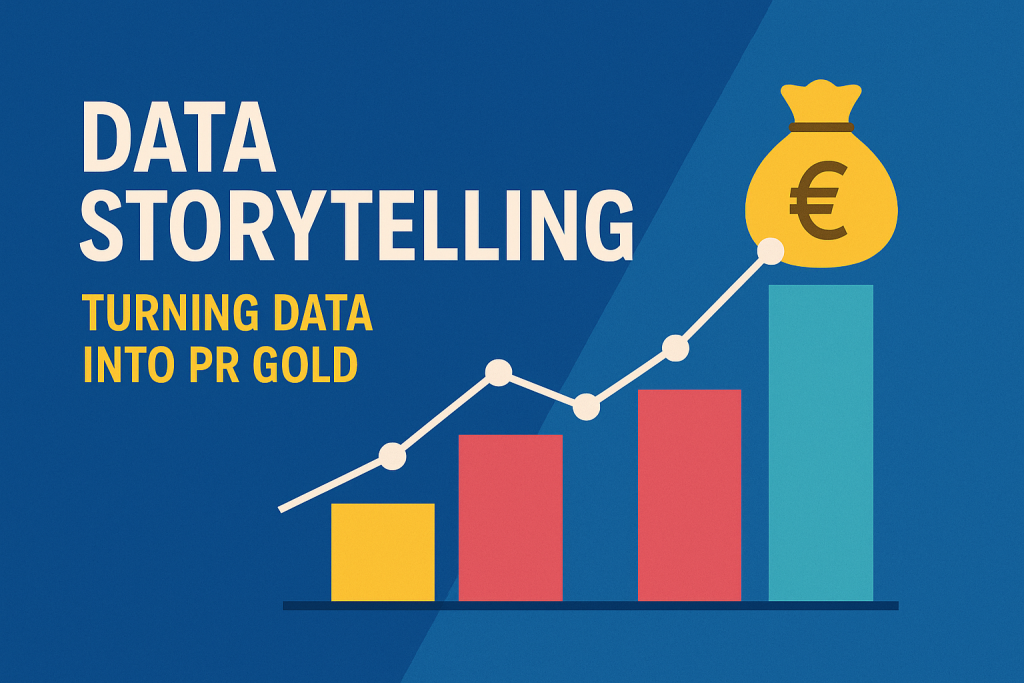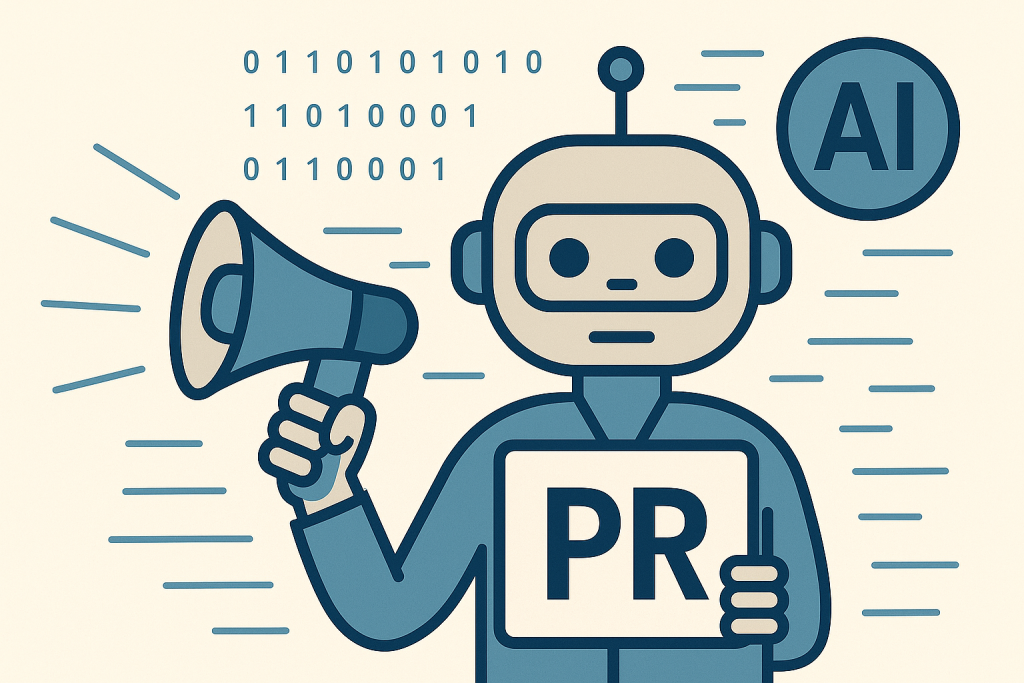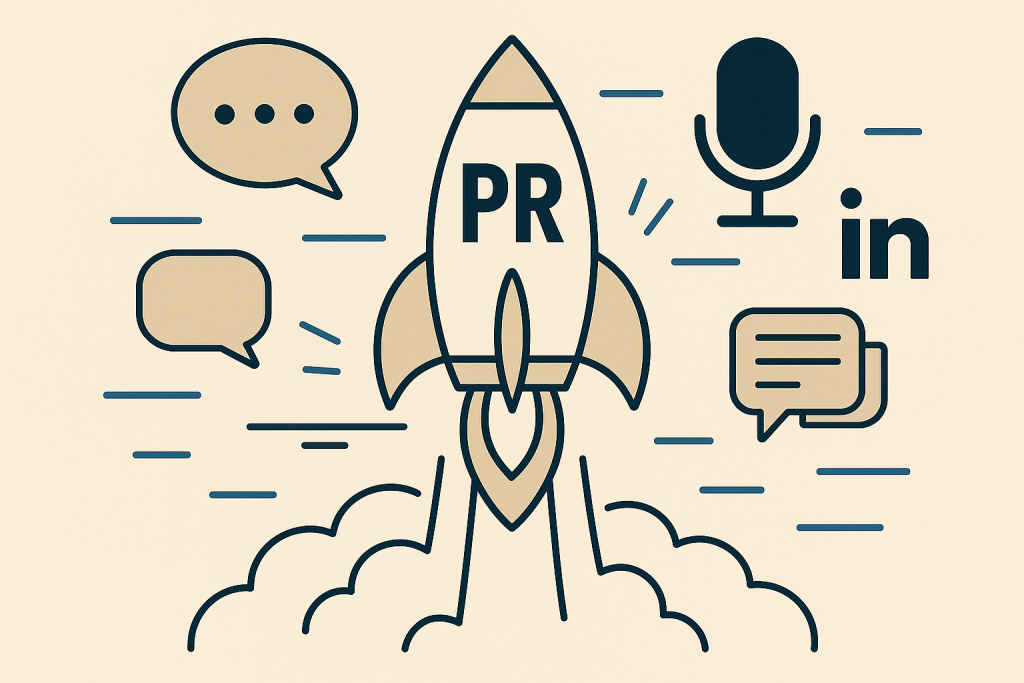
How a German startup with zero revenue made it into the Wall Street Journal and became thought leader in its field
Every tech company owns something no one else has – and what far too often remains untapped in communications: its own data.
Data on how people use their software, how users behave, on transactions, workflows, trends, or industry dynamics. This data is raw material – and those who process it smartly can turn it into stories that excite media, customers, and markets.
Data as a Communications Treasure
While many PR strategies rely on generic market studies or third-party sources, tech companies hold something far more valuable: valid, authentic data from real people and real usage situations.
Whether anonymized usage statistics, aggregated transaction data, or benchmarking insights – they provide exclusive perspectives no one else has. That’s exactly what makes them so attractive for the media.
Examples of Successful Data Storytelling
Cliqz: Tracking the Trackers
For Cliqz, a startup with the ambitious goal of building privacy-friendly European alternatives to the US search and browser monopolies, I published a large-scale study on the prevalence of tracking technologies across hundreds of thousands of websites worldwide. It identified the biggest “data krakens” – unsurprisingly: Facebook/Meta, Google & Co.
The study was covered by leading media outlets worldwide, including the Wall Street Journal, Wirtschaftswoche, WIRED, New York Times, Tagesspiegel, and Focus. It was the launchpad for positioning the CEO as an internationally recognized expert on privacy and fair competition online – and turned him into a thought leader in the field.
Not bad for a German startup with 50 employees and zero revenue at the time, right?
QPLIX: Wealth Management Trend Monitor
QPLIX is a SaaS platform for wealth management whose clients include large asset managers and family offices. The platform manages assets worth around €300 billion – and the data provides unique insights into actual investment trends among the wealth management elite.
When I published the “Trendmonitor Vermögensverwaltung” (Wealth Management Trend Monitor), QPLIX revealed how professionals invest: shifts in asset classes, currencies, and sectors compared to the previous year – such as the boom in defense and energy stocks following the war in Ukraine – as well as a ranking of the top 20 stocks most favored by professionals.
The study was published in virtually every major German business outlet (including Wirtschaftswoche, Handelsblatt, Capital, Manager Magazin) as well as numerous financial trade media – and widely discussed across social networks.
These examples show: When data answers relevant questions, it creates relevance for the media and the public. And often, it opens the first door to journalists who are otherwise difficult to reach.
The PR Effect of Data: Media, Relationships, Visibility
From my experience, data-driven studies and reports are among the most effective levers for building visibility and reputation – especially for startups aiming for their first big media breakthrough. They deliver several benefits at once:
- Media impact: Top-tier and trade media love valid, exclusive data – it creates real value.
- Relationship building: Data stories open doors to journalists and analysts because they offer substantive content. These often develop into long-term relationships.
- Thought leadership: Consistently providing credible insights positions a company as an industry leader.
- E-E-A-T & AI visibility: Data storytelling strengthens a brand’s “Experience, Expertise, Authoritativeness, Trustworthiness” (E-E-A-T). These signals increasingly influence how search engines and AIs like ChatGPT evaluate and rank content – boosting long-term visibility.
Especially in tech PR, where new players need to gain credibility fast, data storytelling is a powerful door-opener. More than that: data is true PR gold.
From Dataset to Story
But raw data alone isn’t enough. The key is to translate it into stories that convey or reinforce the company’s strategic messages.
Data storytelling is never an end in itself – it should always serve the company’s positioning, vision, or mission.
From my experience, three elements matter most:
- Strategic relevance: Each data story should support one or more key brand messages. Numbers are most powerful when they illustrate a bigger narrative.
- Compelling headlines: Craft a sharp core message or headline that immediately sparks interest – ideally surprising or provocative.
- Visualization: Data only works when it’s understood. Clear, engaging visuals are essential so journalists and readers grasp the key insights at a glance.
Strong data storytelling combines analytical depth with narrative clarity. That’s how numbers become stories that stick – rather than being forgotten two days later.
Craft & Responsibility: Data Storytelling Requires Data Science – and Ethics
Turning data into stories requires not only a strong sense for content but also solid methodology and a clear awareness of data ethics.
In my experience, this is often underestimated in the early concept phase.
Data Science as the Foundation
For data storytelling to be credible, the underlying analysis must be statistically sound.
That means:
- rigorous data collection and preparation
- plausibility and quality checks
- appropriate analytical methods and visualizations
- transparent documentation of the methodology
Ideally, PR and marketing teams should work closely with data scientists or analysts inside the company to ensure no false conclusions are drawn and no “pretty numbers” are manipulated.
Privacy & Anonymization
Equally important: protecting personal data.
Data stories must never allow conclusions about individual people or companies. Specifically, this means:
- Anonymization: Removing all personal identifiers before analysis even begins
- Aggregation: Publishing only in sufficiently large groups or clusters
- Data minimization: Collect and communicate only what’s truly relevant
- Careful AI use: AI can help prepare and analyze data – but sensitive information must never end up in training datasets
- Ethical review: Before publication, ensure that no results unintentionally foster discrimination or stigmatization
- Transparent communication: When publishing studies, reports, and press materials, always make it clear that the data was collected and analyzed under strict anonymization. Otherwise, user and customer trust may be shaken – in the worst case, reputational damage can follow.
This is how data storytelling becomes both trustworthy and privacy-safe – a key success factor for winning long-term credibility with media and the public.
Conclusion
Data is the new PR gold – especially in the tech sector.
Companies that identify their data sources, extract insights, and turn them into compelling stories gain a genuine competitive advantage in communications.
In my experience, data storytelling – done with methodological rigor and embedded in the communications strategy – is not just a powerful PR lever but also the first step toward true thought leadership.
About the author
I am Thomas Konrad, a freelance tech PR and content marketing specialist. I have been supporting tech companies and start-ups with their communications for 25 years. I bring your products, innovations, people and brands to the global stage, using AI wisely and responsibly.


